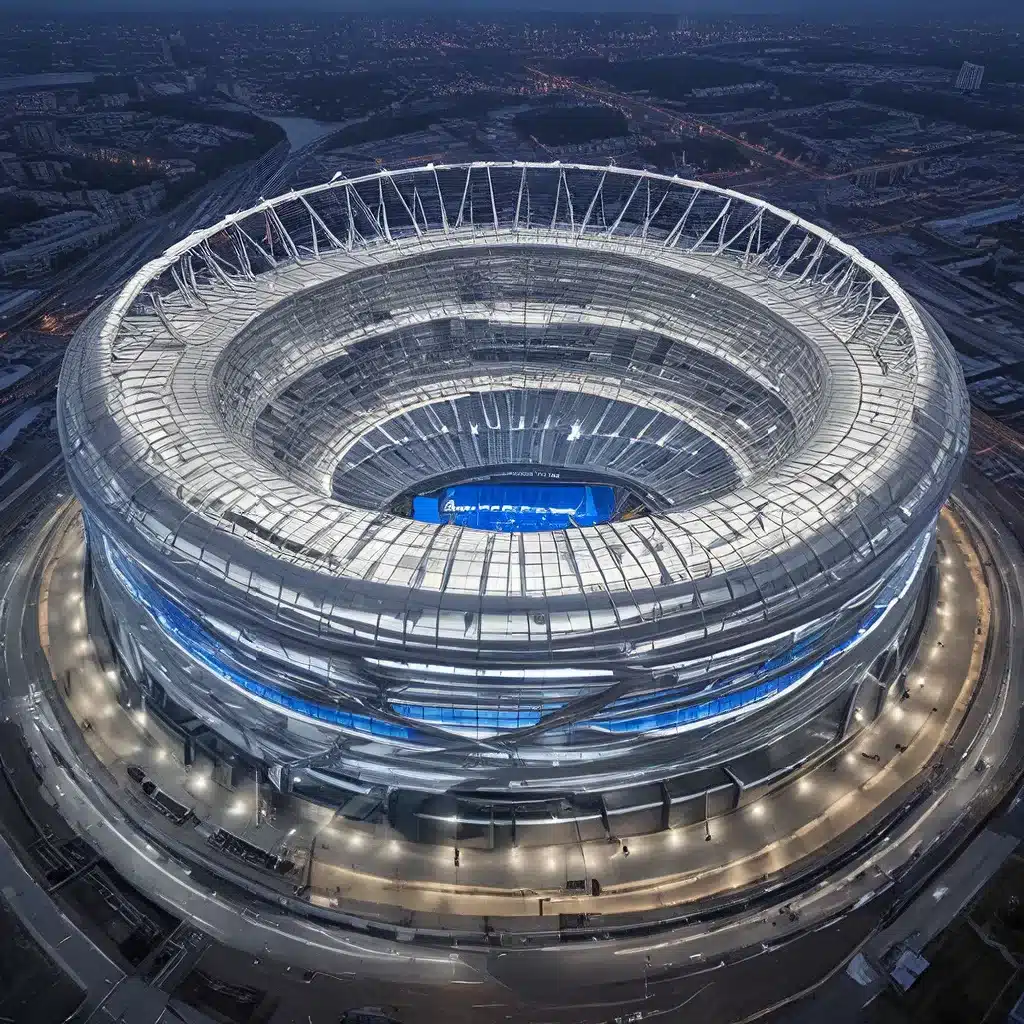
Located along the shores of the Neva River in St. Petersburg, Russia, the Gazprom Arena stands as a testament to the city’s rich football heritage and its ambitions for the future. Opened in 2017, this state-of-the-art stadium has quickly become one of the most iconic venues in world football, hosting some of the sport’s most prestigious events and captivating audiences with its futuristic design and technological innovations.
A Storied History
The Gazprom Arena sits on the site of the former Kirov Stadium, which was demolished in 2006 to make way for the new structure. The old stadium had a long and storied history, having played host to numerous international matches and domestic cup finals since its inception in 1950. However, as the demands of modern football grew, it became clear that a more modern and expansive venue was needed to showcase the city’s passion for the sport.
The decision to build the Gazprom Arena was made as part of Russia’s bid to host the 2018 FIFA World Cup. The new stadium was designed to not only meet the requirements of the world’s largest football tournament but also to serve as a centerpiece for the city’s ongoing development and revitalization efforts. The project was a massive undertaking, with construction costs estimated at around 930 million dollars, making it one of the most expensive stadiums ever built.
Architectural Masterpiece
The Gazprom Arena’s design is a striking departure from the traditional football stadium, with its sleek and futuristic aesthetic. Architect Erick van Egeraat, who led the design team, envisioned a structure that would seamlessly integrate with its surrounding environment and create a truly immersive experience for spectators.
The stadium’s most distinctive feature is its oval-shaped, illuminated outer shell, which gives the venue a mesmerizing glow that can be seen from miles away. This innovative lighting system not only enhances the arena’s visual appeal but also helps to regulate the internal climate, ensuring a comfortable environment for players and fans alike.
The stadium’s interior is equally impressive, featuring a retractable roof that can open and close in just 15 minutes, allowing for year-round use and the ability to adapt to changing weather conditions. The playing surface itself is also equipped with a state-of-the-art pitch heating system, ensuring that the grass remains lush and well-maintained even during the region’s harsh winters.
Technological Marvels
The Gazprom Arena is not just a stunning architectural achievement; it is also a technological marvel, designed to provide a truly immersive and engaging experience for its guests. From the moment visitors step inside the stadium, they are surrounded by a host of cutting-edge features and amenities that enhance the overall experience.
One of the most impressive aspects of the Gazprom Arena is its extensive use of digital technology. The stadium is equipped with a vast array of high-definition screens and displays, allowing for seamless integration of live match footage, player statistics, and digital content. This, combined with the venue’s state-of-the-art sound system, creates a truly immersive and engaging atmosphere that transports fans into the heart of the action.
The Gazprom Arena also boasts a highly sophisticated security system, with advanced facial recognition technology and a network of surveillance cameras that work together to ensure the safety and security of all visitors. This comprehensive approach to safety and security has made the stadium a benchmark for other modern football venues around the world.
Hosting the Best
Since its opening, the Gazprom Arena has quickly established itself as one of the premier football venues in Europe, hosting a wide range of prestigious events and competitions. In 2018, the stadium played a central role in the 2018 FIFA World Cup, serving as the venue for six matches, including the third-place playoff between Belgium and England.
The Gazprom Arena’s reputation as a world-class football venue was further cemented in 2021, when it was selected as one of the host stadiums for the UEFA Euro 2020 tournament. The arena hosted three group-stage matches and a quarterfinal, showcasing its ability to handle the demands of major international competitions and captivating audiences with its stunning visuals and technological prowess.
Beyond its role in hosting international tournaments, the Gazprom Arena has also become the permanent home of FC Zenit Saint Petersburg, one of Russia’s most successful and popular football clubs. The stadium’s state-of-the-art facilities and intimate atmosphere have made it a favorite among the club’s passionate supporters, who create a vibrant and electric atmosphere on match days.
A Visionary Future
As the Gazprom Arena continues to cement its place as one of the world’s most iconic football stadiums, the venue’s developers are already looking to the future, exploring new ways to enhance the fan experience and solidify the arena’s position as a global leader in sports technology and innovation.
One of the most exciting developments on the horizon is the stadium’s foray into the world of virtual and augmented reality. The Gazprom Arena’s management team is currently exploring the possibility of integrating these cutting-edge technologies into the venue, allowing fans to interact with the game in entirely new and immersive ways, such as accessing real-time player statistics or even participating in virtual tours of the stadium.
Additionally, the Gazprom Arena is at the forefront of the sustainability movement in the sports industry, with the venue’s designers and operators continuously exploring ways to reduce the stadium’s environmental impact and promote eco-friendly practices. This includes initiatives such as the installation of solar panels, the use of renewable energy sources, and the implementation of comprehensive waste management and recycling programs.
As the world of football continues to evolve, the Gazprom Arena stands as a shining example of what the future of the sport can look like – a fusion of cutting-edge technology, architectural excellence, and a deep commitment to delivering an unforgettable experience for fans and players alike. With its visionary approach and unwavering dedication to innovation, this stadium is poised to remain a beacon of inspiration for football enthusiasts around the globe for years to come.

